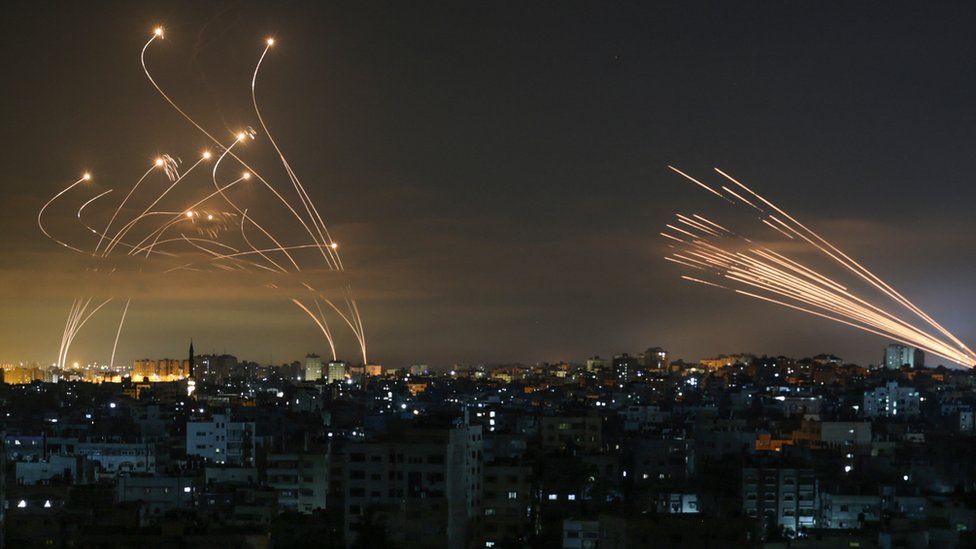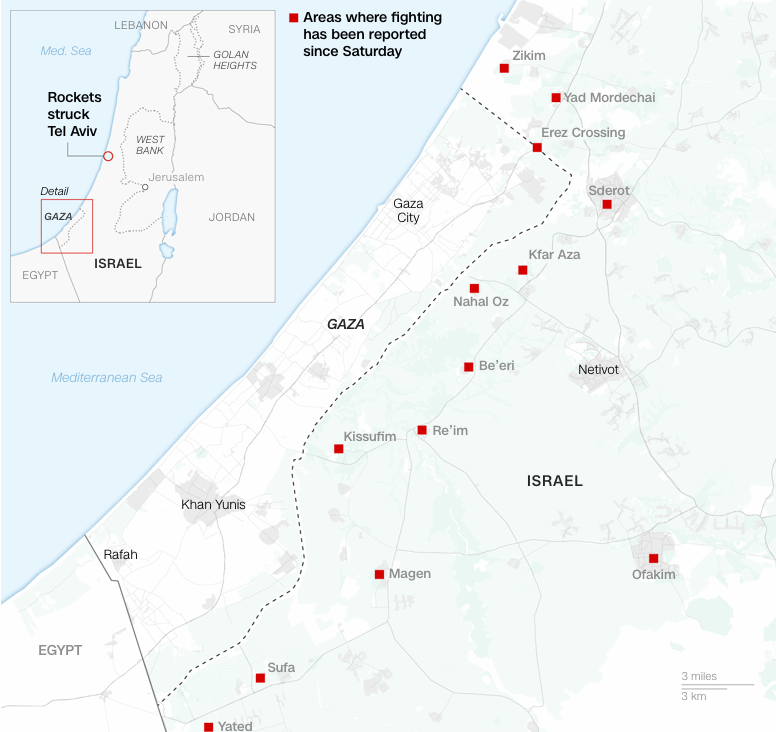Pranav Kashyap

Israel has declared a state of war, after Hamas, a Palestinian militant group which controls Gaza, attacked the border towns of Israel in the early hours of Saturday. Over 100,000 people have been displaced in Gaza as Israel continues to retaliate on Hamas’ attack.

The casualties could have been significantly higher had the Israel Defense Forces (IDF) not deployed its ‘Iron Dome’ technology, which is protecting the Israeli skies.
Israel’s Iron Dome System
Hamas, operating mainly from the Gaza Strip, fired at least 3,000 rockets on Israel on Saturday. The IDF said that it caused little or no harm as their Iron Dome air defence system intercepted almost 90% of the rockets fired.
The Iron Dome, which operates using the radar technology, was created primarily to intercept close-range rockets and mortars being fired at Israel. It detects an incoming rocket, from up to 70 kms away, using predictive analytics and machine learning, working with data such as speed, weather and size to calculate the trajectory and point of impact.

The control centre analyses that information and subsequently launches a counter-missile to nullify the enemy rocket. If the enemy rocket is headed to unpopulated terrains and there’s little or no damage estimated, the system decides not to counteract.
How Israel has integrated AI into military
The Israeli Defence Forces are using AI to organise logistics during wartime, reduce the time taken for decision-making and selecting targets. They use a system of AI recommendations which crunches large amounts of data and selects targets for air strikes.
After this, raids and logistics are quickly assembled using another AI software, called ‘Fire Factory’, which uses data about targets to calculate ammunition loads, and assign targets to fighter jets and military drones. It also prepares a schedule, saving loads of time and lives.
All AI suggestions are overseen and, if necessary, corrected by human operators. Research agrees that the use of AI in modern warfare can reduce casualties, both military and civilians.
This AI system is trained on thousands of hours of footage to identify people and objects. It interprets large amounts of drone footage, satellite imagery, electronic signals and online communications, according to Bloomberg.
In 2021, Israel had used an AI software to identify rocket launchpads and deploy drone swarms. They also use AI to analyse satellite imagery. The IDF using AI, had raided weapon shipments in Syria and Lebanon which were to be delivered to Iran-backed militants like Hezbollah.
“What used to take hours now takes minutes, with a few more minutes for human review,” said Col Uri, who heads the army’s digital transformation unit, to Bloomberg.
Israel is also using facial recognition technology to scale down on Palestinians. The army had such extensive images, that one former soldier described it as the army’s secret “Facebook for Palestinians” , according to The Washington Post.
The operation, called “Blue Wolf”, is being conducted for over two years now. This is an effort by Israel to defend against terrorists.
Who’s Funding it?
Coming back to the Iron Dome, it was initially developed without the help of the US, but from 2011, they started to support the program financially. Now, some of the missiles are made by the US. America is a huge support for Israel. The two ally nations have signed a contract whereby the US would provide $38 billion assistance in total from 2019 to 2028.
Israel wants to become an AI “superpower” and advance its autonomous warfare and combat decision-making, said the director of Israel’s defence ministry. “There are those who see AI as the next revolution in changing the face of warfare in the battlefield,” said Eyal Zamir, a retired army general, at the Herzliya Conference, an annual international security forum.
The details of how much the country wants to spend on this AI-revolution remains undisclosed.
No comments:
Post a Comment